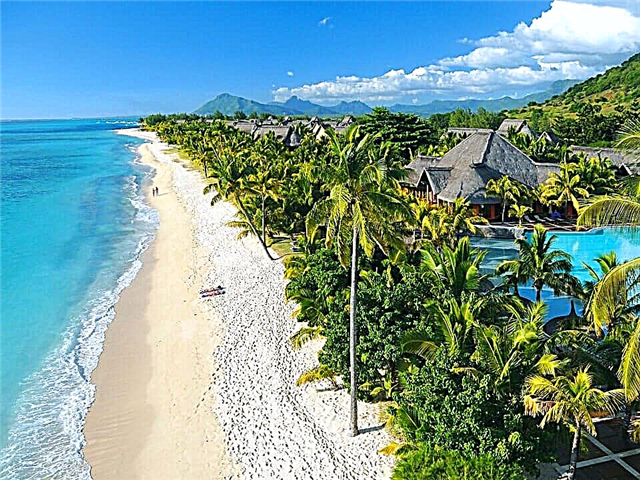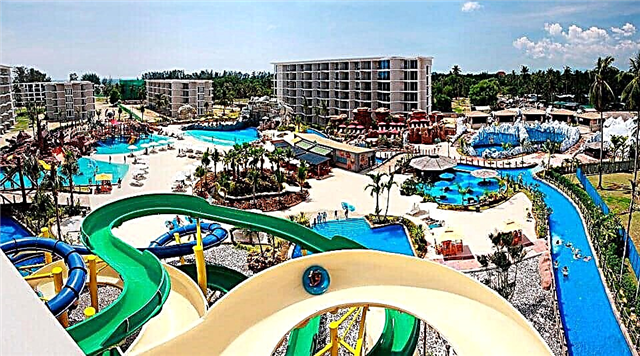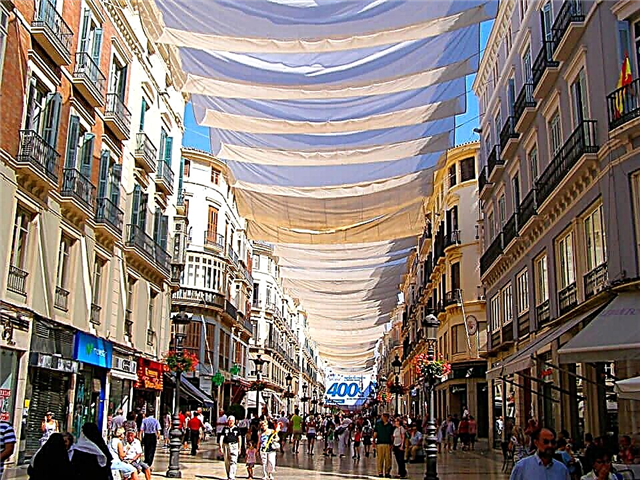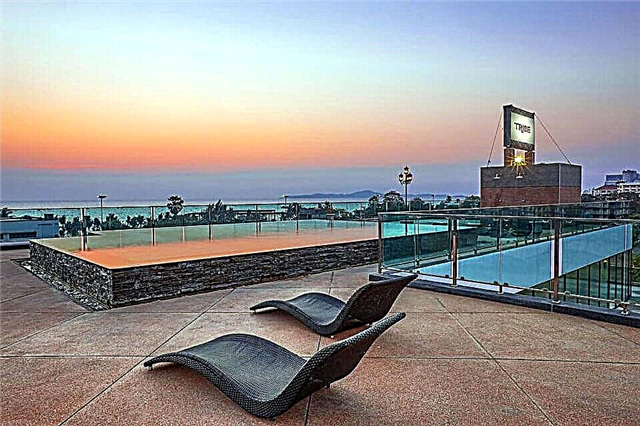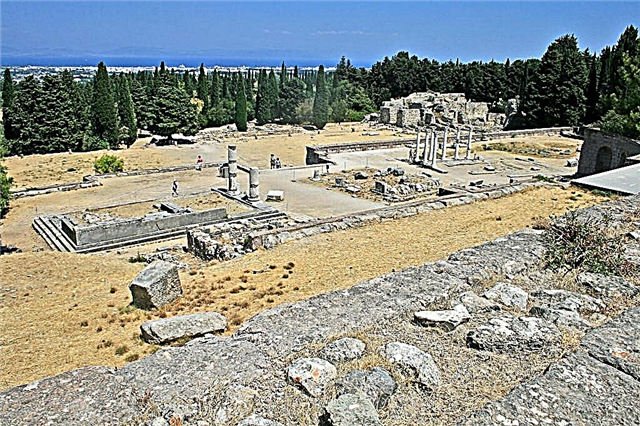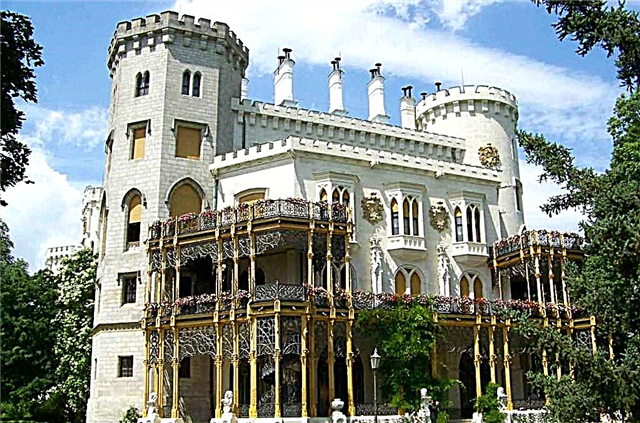The brick two-story temple, located in the very center of Kostroma, attracts pilgrims and tourists with an unusual composition and restrained baroque forms. It appeared in the former Gasheevskaya Sloboda in the second half of the 18th century. The high bell tower of the Alekseevskaya church is visible from afar and is crowned with an elegant gilded crown - a sign of the proximity of the Kostroma church to the royal family. In addition, the history of this ancient temple is closely intertwined with the fate of Anastasin's nunnery.
History of the construction of the church
The place where the temple is located, at the beginning of the 17th century, was located on the northern outskirts of Kostroma and was occupied by the houses of the Gasheevskaya Sloboda, whose inhabitants were engaged in slaking lime. In those days, all the local suburban courtyards belonged to the Anastasia women's monastery.
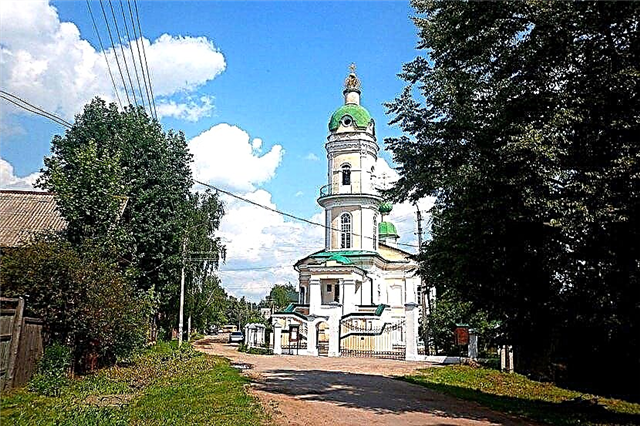
View of the bell tower of the Church of Alexy, the Man of God in Gasheeva Sloboda
The first wooden church built here is mentioned in the scribes of the mid-17th century. Already in those days it was dedicated to Alexy, the man of God. Researchers are sure that the choice of the name of the church was associated with the special attitude of the sovereign Mikhail Fedorovich Romanov towards it.
In the Time of Troubles, the Polish-Lithuanian detachments plundered Anastasia's monastery, and her abbess asked the sovereign for letters confirming the monastic possessions. After all, the old documents were lost during the attack of the enemy. The tsar issued a written confirmation that the monastery owns the Gasheevskaya settlement and can use the land for a cow yard. Soon the royal family had a son - the future heir to the throne, Alexei Mikhailovich (Quiet). And, of course, the new wooden church in Gasheevskaya Sloboda was named after its patron saint.
More than 100 years later, the wooden church fell into disrepair. Its priest asked permission from the Bishop of Kostroma and Galich and, having received it, proceeded to build a new stone church. The architectural project was so ambitious that it had to be implemented gradually. At the beginning (1759-1762) the two-story temple itself was built, and in the 1770s a two-story refectory and the lower tier of the bell tower were added to it. The bell tower had to be completed at the beginning of the 19th century. At the same time, a porch was added to the western side of the church.

The history of the church in the XIX-XX centuries
Two thrones were made on the lower floor of the new church. One was dedicated to Alexy, the man of God. And the other was consecrated in honor of St. Basil the Great. So they decided to preserve the memory of the limit of Basil the Great in the Sretensky Church, whose parishioners were assigned to the Anastasia monastery. On the top floor of the Alekseevskaya church, a throne was arranged in the name of the Solovetsky elders, as well as Saint Demetrius, Metropolitan of Rostov.
Then the walls of the temple were painted. The fresco "The Last Supper", placed above the altar of the upper church, has a special history. The isographers made it with oil paints in an academic manner of writing. And as a prototype, they used an engraving depicting a copy of the famous fresco by Leonardo da Vinci from the monastery in Milan.
At the beginning of the 20th century, the parishionership of the Alekseevskaya Church was large and included more than 700 local residents, and the clergy included a priest and a psalmist. Children received their primary education at the parish school that worked at the church from 1886 to 1917. The Kostromichi loved the Gasheevskaya Sloboda as a good place to relax, because there was a large Medny Pond near the church, and here you could take a boat for a ride.
With the advent of Soviet power, the church was not closed immediately, but only in 1929. The education department began to use it as an insulator. A year later, a dormitory was placed in the internal premises. Then they dismantled the "unnecessary" drum with the dome, the porch and the upper tiers of the bell tower, and covered the Copper Pond with earth. The church building lost the specific features of a religious building and was used as a residential building.

Only in the late 1980s began to revive the ancient temple complex. The restoration of the original architectural appearance was carried out according to the project of I.Sh. Shevelev and took 4 years. The temple was returned to the parish community in 1992. A year later, the church was given over to the Kostroma Theological School, which was later transformed into a seminary. And when the restoration was over, church services began to be held not only in the lower, but also in the upper church.
Architecture and interior decoration
The stone temple was built under the influence of the Baroque style. By the time of its construction in the capital of Russia, this style had already gone out of fashion and was almost never used, but in the provinces they continued to endow buildings with elements of baroque architecture.
Compositionally, the church consists of a quadrangle stretched in one axis from east to west, standing across the refectory and the bell tower. A porch adjoins the western side in the form of a two-flight staircase. The high and slender main volume of the temple has a semicircular altar apse, ending with an octagonal drum and crowned with a small cupola.
The specificity of the internal structure of the church was that the main space of the temple and the altar apse were not separated and constituted a single volume. The partition between them on the first floor of the building was installed not so long ago.

Another feature of the Alekseevka Church is that the bell tower is crowned not with the traditional onion or helmet dome, but with an openwork gilded crown. Its appearance is associated with two events: the dedication of the temple to the birth of the future Russian Tsar Alexei Mikhailovich and the visit of Tsarina Catherine II to the city in 1767.
The main element of the external decoration of the building is made up of frame window frames, which are made in the same style for all church facades. And above the windows of the second floor there are picturesque semicircular arches.
The artistic decor of the interior has been partially lost, and the surviving frescoes were made using the technique of glue painting. Their manner and subjects correspond to the traditions of Kostroma stenography of the late 18th and early 19th centuries. The frescoes of the vaults and the remarkable painting "The Last Supper" were completely restored in 1994 by Kostroma restorers.
The current state of the temple and the visiting regime
Alekseevskaya church - active and fully restored. The restoration of wall paintings has been completed, a church fence has been made around the temple and bells have been hung. The church is considered a historical and cultural monument of federal significance and has the status of a house church at the seminary. Anyone can get inside the church. It is open daily from 10.00 to 18.00.

The head of the temple bell tower in the form of a gilded crown
How to get there
The church is located on the street. Reel (former Alekseevskaya), 14.
By car. The road from the capital to Kostroma takes 4.5-5 hours (346 km) and runs along the Yaroslavl highway and the M8 highway (Kholmogory). In Kostroma on the road bridge you need to move to the left bank of the Volga and get to st. Soviet. At the crossroads, turn left and drive along Sovetskaya, Smolenskaya and Sennaya streets until the intersection with ul. Reel to reel. The temple is located 100 meters from the intersection of Katushechnaya and Sennaya streets.
By train or bus. From the Yaroslavsky railway station to Moscow trains reach Kostroma in 6.04-6.35 hours. In addition, from the Central Bus Station of the capital, located near the Shchelkovskaya metro station, you can get to Kostroma by regular buses (7 trips a day). This journey takes 6.50 hours. The Kostroma bus station is 1 km away from the railway station. You can get to the temple in the city by bus No. 21, trolleybus No. 7, as well as by shuttle buses No. 21, 48, 49, 51, 56 (to the stops "Grazhdanproekt" or "Khlebzavod").
Attraction rating:

